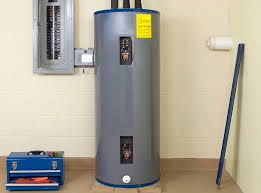Tips on How to Keep Your Home's Hot Water System Functioning Well
Tips on How to Keep Your Home's Hot Water System Functioning Well
Blog Article
Just how do you really feel when it comes to How to Maintain a Hot Water Heater in a Few Simple Steps?

Hot water is important for daily comfort, whether it's for a refreshing shower or cleaning recipes. To guarantee your warm water system runs effectively and lasts longer, regular maintenance is vital. This post offers useful tips and understandings on just how to preserve your home's hot water system to avoid disruptions and pricey repair services.
Introduction
Maintaining your home's warm water system could seem challenging, but with a couple of basic steps, you can ensure it runs efficiently for years ahead. This guide covers everything from recognizing your warm water system to DIY upkeep ideas and understanding when to call in expert help.
Importance of Keeping Your Hot Water System
Routine maintenance not just prolongs the lifespan of your warm water system but additionally ensures it operates successfully. Neglecting maintenance can lead to reduced efficiency, greater energy expenses, and even early failure of the system.
Indicators Your Hot Water System Needs Upkeep
Knowing when your warm water system needs focus can avoid significant problems. Look out for signs such as irregular water temperature, odd noises from the heating system, or corroded water.
Flushing the Hot Water Heater
Flushing your water heater gets rid of sediment build-up, improving performance and prolonging its life.
Checking and Changing Anode Rods
Anode rods protect against corrosion inside the container. Evaluating and replacing them when broken is essential.
Facility Issues Needing Professional Assistance
Instances include significant leakages, electrical issues, or if your hot water heater is regularly underperforming.
Regular Professional Maintenance Conveniences
Specialist maintenance can consist of thorough inspections, tune-ups, and ensuring conformity with safety and security standards.
Checking and Changing Temperature Level Settings
Adjusting the temperature setups makes certain optimal performance and safety and security.
Do It Yourself Tips for Maintenance
You can perform a number of maintenance tasks yourself to maintain your warm water system in top condition.
Checking for Leakages
On a regular basis evaluate pipelines and links for leakages, as these can bring about water damages and greater costs.
Recognizing Your Warm Water System
Before diving into maintenance tasks, it's useful to understand the basic components of your hot water system. Generally, this includes the hot water heater itself, pipelines, anode poles, and temperature level controls.
Regular Monthly Maintenance Tasks
Regular monthly checks can aid capture small issues before they escalate.
Examining Stress Alleviation Valves
Checking the pressure relief valve ensures it functions properly and prevents too much stress accumulation.
Protecting Pipes
Insulating warm water pipelines decreases warm loss and can save power.
When to Call a Specialist
While do it yourself maintenance is advantageous, some concerns call for expert knowledge.
Conclusion
Routine maintenance of your home's hot water system is crucial for performance, durability, and price financial savings. By complying with these tips and understanding when to look for expert help, you can ensure a reputable supply of hot water without unanticipated interruptions.
How to Maintain an Instant Hot Water Heater
Before tinkering with your hot water heater, make sure that it’s not powered on. You also have to turn off the main circuit breaker and shut off the main gas line to prevent accidents. Also turn off the water valves connected to your unit to prevent water from flowing into and out of the appliance. 2. When you’re done, you have to detach the purge valves’ caps. These look like the letter “T†and are situated on either side of the water valves. Doing so will release any pressure that has accumulated inside the valves while at the same time avoid hot water from shooting out and burning your skin. 3. When the purge valves’ caps are removed, you have to connect your hosing lines to the valves. Your unit should have come with three hoses but if it didn’t, you can purchase these things from any hardware or home repair shops. You can also get them from retail stores that sell water heating systems. Read the user’s manual and follow it to complete this task properly. When the hosing lines are connected, open the purge port’s valves. 4. You should never use harsh chemical cleaners or solutions when cleaning your unit. Make use of white vinegar instead. It should be undiluted and you’ll probably use about 2 gallons. 5. Now flush your water heater. This task should probably take about 40 minutes. We can’t give you specific directions for this because the procedure is carried out depending on the type, model and brand of your heater. With that being said, refer to the user’s manual. 6. When you’re done draining the unit, you have to turn off the purge port valves again. Remove the hosing lines that you earlier installed on each of the water valves. Put the valve caps (purge port) back in their respective places and be very careful so as not to damage the rubber discs that are found inside these caps. 7. Now that everything’s back in place, check your user’s manual again to find out how to reactivate your water heating system. 8. Once it is working, turn one of your hot water faucets on just to let air pass through the heater’s water supply pipes. Leave the tap on until water flows smoothly out of it. https://www.orrplumbing.com/blog/2014/september/how-to-maintain-an-instant-hot-water-heater/

Do you enjoy reading up on Tips For Maintaining Your Hot Water Heater? Place a comment further down. We'd be happy to know your opinion about this entry. We hope that you come back again in the future. Sharing is nice. You won't know, you may very well be doing someone a favor. We treasure reading our article about Tips For Maintaining Your Hot Water Heater.
Call Today Report this page